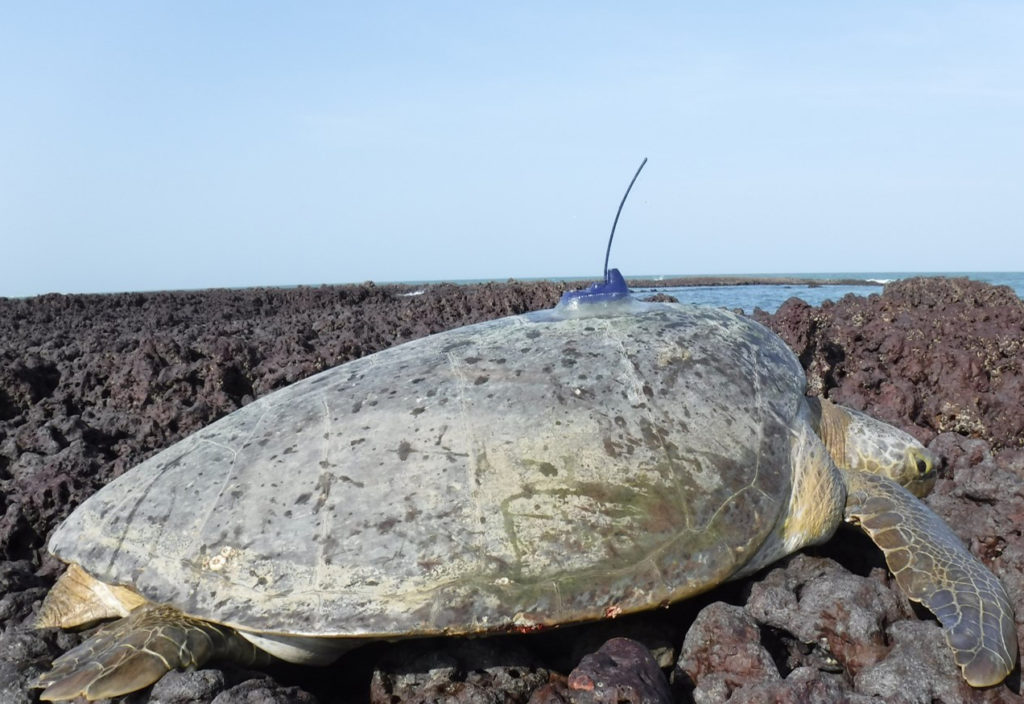Understanding the movements of #seaturtles helps us protecting them
Within our projects funded by the MAVA Foundation – “Consolidation of Sea Turtle Conservation in Guinea-Bissau” – and by the PRCM – “Survie des Tortues Marines” – the ISPA – Instituto Universitário, the University of Exeter, and the Faculty of Sciences of the University of Lisbon have partnered up with the Instituto da Biodiversidade e das Áreas Protegidas (IBAP – Guinea-Bissau) to research the movements of green turtles within their breeding area, and through their post-nesting migration.
From 2018 to 2020, we have successfully deployed 35 satellite-tracking devices on female green turtles found nesting at Poilão Island. Thanks to the satellite technology, we have watched closely the daily movements of these green turtles and have very interesting findings.

We have learned that some nesting females interchange between Poilão and the nearby islands of Meio and Cavalos, all within the João Vieira – Poilão Marine national Park, also supported by tag-returns from previous years. Others venture outside the limits of the marine protected area (MPA) in between clutches, which was unexpected, as marine turtles usually rest near the nesting beach while preparing for the next clutch. Lastly, once they laid all clutches for the season, the green turtles initiate their migration to distant feeding grounds and we were able to follow most of them on their route up north, to the coastal waters of the Parc National du Banc d’Arguin, Mauritania, and to other previously unknown foraging areas.

The movements recorded during the in壯陽藥
ter-nesting intervals will be essential to re-design the limits of the João Vieira – Poilão MPA, while the knowledge on the post-nesting migratory routes and connectivity between breeding and foraging areas will be key to understand the threats to this population outside this MPA, to identify conflict areas with fisheries, and to establish collaborations with sea turtle conservation projects within the region.
Ultimately, these findings will contribute to a better understanding of the conservation status and main threats of the green turtle in the Bijagós Archipelago, and we are looking forward for more results.

